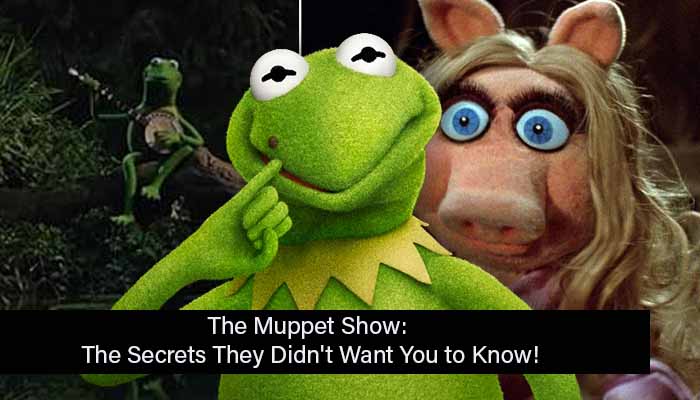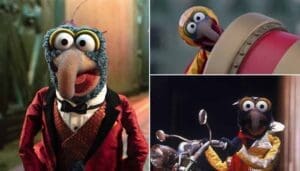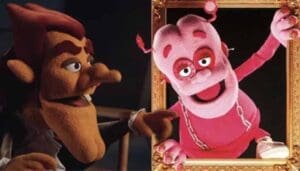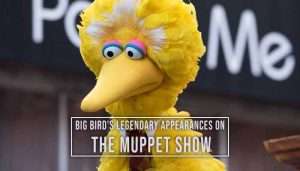Beyond the Felt Facade
For generations, The Muppet Show has been synonymous with wholesome, family-friendly entertainment, a vibrant tapestry of felt, foam, and pure, unadulterated joy. It conjures images of Kermit the Frog serenading us with “Rainbow Connection” and Miss Piggy delivering a karate chop with a flourish. Yet, beneath this seemingly innocent exterior, behind the curtain, and woven into the very fabric of the Muppetverse, lies a fascinating trove of secrets. These revelations are often stranger, sometimes darker, and undeniably funnier than many viewers might imagine. This exploration aims not to diminish the iconic legacy of Jim Henson and his extraordinary team, but rather to celebrate their glorious, chaotic genius by unearthing the delightful oddities that cemented The Muppet Show‘s legendary status. From Henson’s early, boundary-pushing ambitions to celebrity guests engaging in truly bizarre antics, and the unsettling corners of the Muppet world, this report delves deep into the hidden layers of a cultural phenomenon.
When Muppets Went Wild: Henson’s Early Adult Ambitions
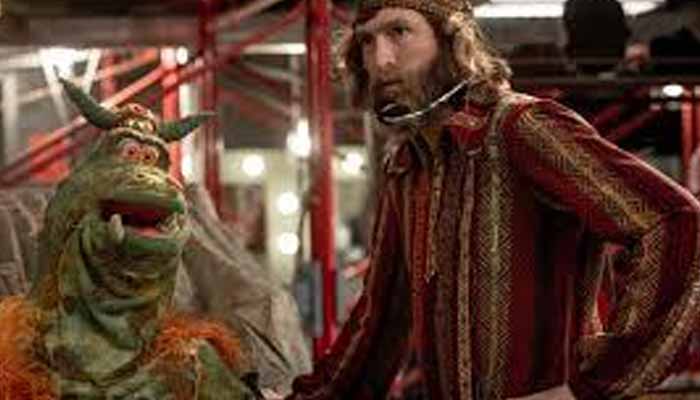
Before The Muppet Show became a global sensation, Jim Henson faced a significant challenge: preventing his creations from being typecast solely as children’s entertainment. His solution was an experimental venture known as The Land of Gorch. These segments, featured during the inaugural season of NBC’s Saturday Night Live, presented a stark contrast to the innocent Muppets audiences would later embrace. The characters in The Land of Gorch were far from wholesome, engaging in “boorish” behavior and making frequent references to “drug abuse, sexual activity, and consumption of alcohol”. This was a deliberate and bold attempt by Henson to push the boundaries of puppetry, showcasing its versatility for more mature themes and asserting its place beyond the confines of children’s programming. This early push for adult themes highlights a profound artistic drive within Henson, a desire to explore edgier content and avoid being pigeonholed, thereby demonstrating his visionary approach to puppetry as a medium for all ages.
However, this creative vision encountered significant friction. The writers and cast of Saturday Night Live were reportedly less than enthusiastic about their felt co-stars, often refusing to commit to writing for the Muppets and openly bemoaning their inclusion. This internal conflict escalated, making the collaboration “too divisive” and ultimately leading to the Muppets’ departure after just one season. This clash was more than a mere scheduling inconvenience; it represented a fundamental disagreement in creative philosophy. Henson sought to elevate puppetry as a sophisticated art form, while some within the
SNL camp viewed the Muppets as a novelty or even a distraction. The struggle for artistic autonomy during this period underscores the challenges Henson faced in integrating his unique vision into an established, often cynical, comedic environment.
Despite the difficulties, the departure from Saturday Night Live proved to be an unexpected turning point. The perceived “failure” of Gorch on SNL inadvertently paved the way for The Muppet Show. This experience provided Henson with a crucial understanding of the environment his Muppets needed to truly flourish: one where he could exercise full creative control. The frustrations and limitations encountered during
Gorch directly motivated Henson to establish his own independent platform, leading to the introduction of now-iconic characters such as Miss Piggy, Fozzie Bear, and Gonzo. This transition ultimately propelled the Muppets to global celebrity status, illustrating how sometimes, the most successful ventures are born out of earlier, less successful, but creatively vital, experiments.
The “Problematic” Playlist: Disney+’s Content Advisories
Viewers who have been revisiting The Muppet Show on Disney+ may have noticed a small but significant detail before certain episodes: a content advisory screen. This inclusion is not simply an act of corporate caution; it serves as a powerful reminder that a show produced in the late 1970s and early 1980s, while universally beloved, contains numerous moments that are now considered problematic when viewed through a contemporary lens. The sheer volume and variety of these content advisories reveal a profound shift in cultural sensitivities over the past four to five decades. What was once accepted as innocuous humor or common representation is now critically re-evaluated due to evolving understandings of cultural respect, historical context, and the potential for perpetuating harmful stereotypes. This situation highlights how media, as a product of its time, can reflect societal blind spots that are subsequently brought into sharper focus by changing social norms.
While Disney maintains a degree of vagueness regarding the precise reasons for each advisory, dedicated fans and resources like the Muppet Wiki have undertaken the detective work to shed light on the likely issues.
Table 1: Disney+ Content Advisories: A Quick Guide to the “Problematic” Episodes
| Guest Star/Episode Title | Likely Reason for Advisory |
| Joel Grey | “Pachalafaka” segment |
| Jim Nabors | “Indian Love Call” segment |
| Steve Martin | “Gonzales and Yolanda” segment |
| Peter Sellers | “A Gypsy’s Violin” segment |
| Cleo Laine | “Mad Dogs and Englishmen” segment |
| James Coco | Fortune Teller segment; possibly “Short People” segment |
| Spike Milligan | Most of the episode, notably “Oklahoma!” and “It’s a Small World” segments |
| Kenny Rogers | Arab Muppets drilling for oil in dressing room; Witch Doctor Muppet in “Coconut” segment |
| Crystal Gayle | “Mammy!” sung in “Swanee” segment (reference to blackface and stereotype) |
| Beverly Sills | Chinese Gorilla Muppet |
| Jonathan Winters | Native American segment; Gypsy Muppet placing a curse and performing “Golden Earrings” |
| Alan Arkin | “Zip-A-Dee-Doo-Dah” segment (from controversial Song of the South) |
| James Coburn | “Salute to Japan” segment |
| Joan Baez | Indian accent after discussing Gandhi; “The Night They Drove Old Dixie Down” (sympathizes with Confederacy) |
| Johnny Cash | Appearance of Confederate Flag throughout episode |
| Debbie Harry | Speculated: “Call Me” song lyrics (from American Gigolo, about a prostitute) |
| Wally Boag | “Pecos Bill” segment (references to Native Americans in lyrics) |
The advisories frequently point to racial and cultural stereotypes. Episodes featuring guests like Joel Grey (“Pachalafaka”), Jim Nabors (“Indian Love Call”), Steve Martin (“Gonzales and Yolanda”), Peter Sellers (“A Gypsy’s Violin”), Cleo Laine (“Mad Dogs and Englishmen”), and Jonathan Winters (with Native American and Gypsy Muppet segments) likely contain caricatures or insensitive portrayals of various cultures. The “Chinese Gorilla Muppet” in the Beverly Sills episode is another example of such problematic representation.
Furthermore, historical insensitivities are a common thread. The Kenny Rogers episode includes “Arab Muppets drilling for oil” and a “Witch Doctor Muppet”. The Crystal Gayle episode’s advisory may stem from the word “Mammy!” sung in the “Swanee” segment, a direct reference to Al Jolson’s blackface performance in
The Jazz Singer and a word associated with a stereotype of Black maids. Joan Baez’s episode is flagged for her “Indian accent” after discussing Gandhi, and potentially for “The Night They Drove Old Dixie Down,” a song that sympathizes with the South during the Civil War. Most notably, Johnny Cash’s episode prominently features the Confederate Flag throughout.
Even the origins of certain content are scrutinized. Alan Arkin’s episode might be flagged simply for the inclusion of “Zip-A-Dee-Doo-Dah,” a song that originated from Disney’s highly controversial film, Song of the South. Lastly, some advisories hint at
implied adult themes. The reason for the Debbie Harry episode’s disclaimer is less obvious, but speculation points to her singing “Call Me,” a song from the film American Gigolo with lyrics widely interpreted to be about a prostitute.
Disney’s decision to include these advisories, rather than outright censoring or editing the episodes, illustrates a complex approach to media archiving. This strategy balances the preservation of the original artistic work with an acknowledgment of its flaws when viewed through contemporary ethical and cultural standards. It reflects a broader trend in media where historical context is deemed important, even if that history contains uncomfortable elements, opting for a disclaimer as a middle ground to inform viewers without altering the original content.
Guest Stars Gone Rogue: Celebrity Shenanigans and Soul-Selling
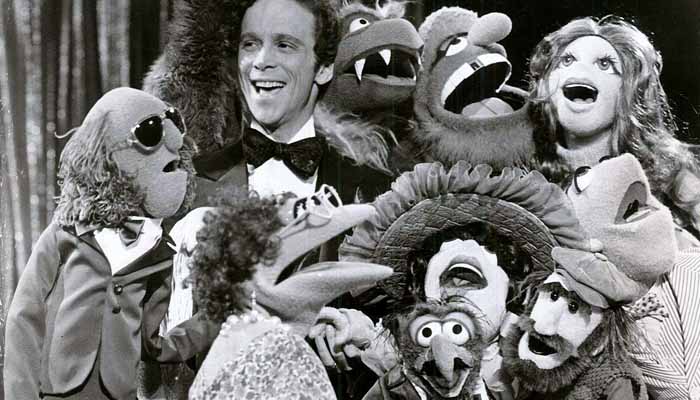
It may come as a surprise, but in its nascent stages, The Muppet Show struggled significantly to attract celebrity guests. In the early days, famous personalities were not exactly clamoring to appear alongside a cast of felt creatures. However, as the show gained traction and its unique charm captured audiences worldwide, this dynamic dramatically reversed. Soon, stars were “fighting to get on,” with some literally pleading with producers, “I’ll do anything you tell me to do”. This rapid transformation from initial skepticism to insatiable demand underscores a fundamental aspect of the entertainment industry: genuine, unmanufactured appeal often triumphs over initial industry prestige. The show’s success was not built on pre-existing celebrity endorsements, but on its inherent creative integrity and unique appeal, which then, in turn, attracted the very celebrities who had initially been hesitant.
Once on set, The Muppet Show provided a unique platform for celebrities to shed their typical personas and engage in truly bizarre, often darkly humorous, scenarios. Consider the unforgettable appearance of Alice Cooper, who, entirely in character, attempted to persuade Kermit to “sell his soul to ‘a guy’ he knew who could make him a rock star”. Kermit, ever the pragmatic frog, was reportedly “extremely annoyed at Gonzo’s ignorance of the legend of Faust,” a testament to the surreal and often unsettling humor that permeated the show. This incident, among others, reveals an almost anarchic creative freedom that Jim Henson extended to his guests.
The Muppet Show was not merely a variety program; it was a safe haven where celebrities could explore the absurd without fear of damaging their public image, a deliberate subversion of traditional celebrity appearances.
The antics continued with other guests. Tony Randall, for instance, accidentally transformed Miss Piggy into a “statue that squealed like it was in constant pain” and transmogrified Scooter into various “sinister forms”. Sandy Duncan, a noted singer and actress, was given the opportunity to fulfill a rather unusual “young girl’s dream of being drunkenly stripped by monsters”. Perhaps most surprisingly, Roger Moore, the epitome of suave as James Bond, performed a “huge, rousing musical number” where he “beat the stuffing out of a number of Muppet spies — as well as kicking them, shooting them, and eventually blowing several of them up with a bomb”. The show’s creators humorously noted that “it was legal to kill both Muppets and foreigners in the ’70s,” highlighting the show’s dark, self-aware humor.
One of the most poignant and peculiar moments involved Peter Sellers. He found himself unable to perform as himself, famously stating he “could be Queen Victoria, but not himself”. This led to a memorable joke about him having himself “surgically removed,” offering a strange and somewhat melancholic glimpse into the psyche of a comedic genius. This incident transcends mere quirkiness; it demonstrates the show’s capacity to reflect profound human vulnerabilities and existential anxieties, even within its comedic framework. The Muppet stage, in these moments, became a mirror, allowing both celebrity guests and the audience to confront the complexities of identity and performance.
Beyond these overt antics, The Muppet Show was also masterfully adept at incorporating subtle adult humor, often winking at the grown-ups in the audience right over the children’s heads. A notable example involves Kermit, who, when presented with a picture of himself with Kylie Minogue, visibly shudders and quips, “Makes me makes me all warm and fuzzy. Yeah, I think I I think I might have just wet your leather here”. Another moment, dubbed “Askgate 2002,” features a character exclaiming, “he pinched my ass”. Even background music could carry a hidden message, as evidenced by a song about “whiskey and wild wild women”. The inclusion of these double entendres and veiled references was a deliberate creative choice, showcasing a sophisticated understanding of intergenerational appeal. The show was meticulously designed to entertain everyone, offering layers of humor that adults would fully grasp, thereby making it a shared experience rather than solely children’s fare. This strategic approach to writing undoubtedly contributed to its longevity and broad appeal, allowing the show to be re-watched and appreciated differently across various stages of life.
The Creepy Corner: Unsettling Characters and Existential Crises
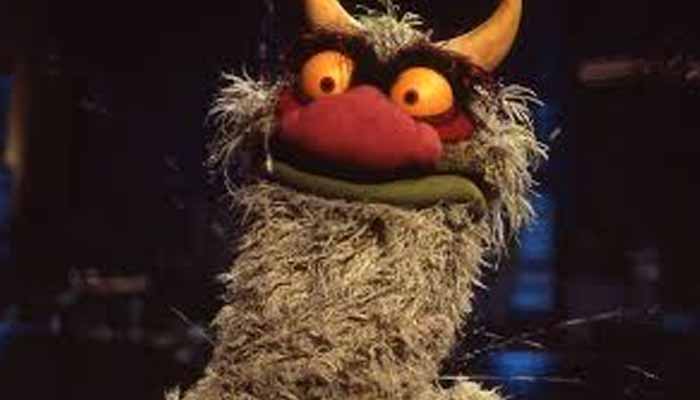
While The Muppet Show is celebrated for its joyous and whimsical nature, it also harbored a collection of characters and moments that ventured into genuinely unsettling territory. Among the most prominent was Uncle Deadly, often referred to as The Phantom. He was “without a doubt the creepiest regular on The Muppet Show”. His distinctive voice was particularly effective in sending shivers down viewers’ spines, and his resurgence in popularity as a villainous henchman in later Muppet productions attests to his enduring, creepy appeal.
Beyond the main cast, the broader Muppet universe is populated by a menagerie of shaggy, often formless monsters, including the likes of Gorgon Heap, The Beautiful Day Monster, and Gene the Behemoth. While many of these creatures eventually became beloved, some, such as Mean Mama—described as a “huge, bulldog-esque abomination with a giant, gaping mouth”—were simply strange and subtly menacing. The consistent presence of these unsettling characters, alongside moments of controlled chaos and suffering, was not accidental. This creative choice served a dual purpose: it provided comedic relief through exaggerated misfortune for adult viewers, while also offering children a safe, controlled environment to experience and process mild fear and absurdity. This demonstrates a sophisticated understanding of how to utilize elements of “darkness” for both entertainment and emotional engagement.
Few Muppets endure as much perpetual torment as poor Beaker, the long-suffering assistant at Muppet Labs. His existence seems to be a continuous experiment in existential dread. One memorable (and disturbing) YouTube video depicts him accidentally carving his head “like a pumpkin” with the Carve O Matic 3000, a moment humorously noted as the date “all Muppet fans began sleeping with the lights on”. In another instance, while testing a ghost detector, Beaker “gets struck by something and returns as a ghost”. Beaker’s relentless suffering, while a running gag, is surprisingly dark, offering a form of slapstick catharsis for the audience.
Perhaps one of the most truly terrifying moments in Muppet history does not involve a monster, but an alternate reality. In It’s a Very Merry Muppet Christmas Movie, Kermit is shown a world where he was never born. This vision is a horrifying dystopia, populated by “Scooter cage dancers and Fozzie pitpocketers”. This glimpse into a Muppet-less existence serves as a stark reminder of Kermit’s central, stabilizing role within the ensemble, highlighting how truly bleak and chaotic things would be without his presence. This scene transcends a simple scary moment; it functions as a profound philosophical exploration of purpose and impact, akin to Frank Capra’s
It’s a Wonderful Life. It demonstrates that the Muppets, at their core, are capable of delivering surprisingly deep, existential messages about the importance of individual contribution and the ripple effect of one’s presence, even within a lighthearted, family-oriented narrative.
Finally, for a “children’s movie,” The Muppet Christmas Carol delivered genuine scares, particularly through the ghostly appearance of Statler and Waldorf as Jacob and Robert Marley. Their “wonderfully choreographed and chillingly directed” scene, in which they warn Ebenezer Scrooge of his impending fate, continues to give viewers “the shivers on every viewing”.
Unmasking the Magic: The Technical “Secrets” Revealed
Beyond the on-screen antics and character quirks, the Muppets’ enduring appeal lies in the ingenious technical wizardry that brings them to life. One fascinating detail often unnoticed by casual viewers is that most Muppets appear to be predominantly left-handed. This is not a deliberate character choice, but rather a practical necessity dictated by the mechanics of puppetry. Performers typically use their right hand to manipulate the puppet’s head and mouth, while their left hand operates the arm rod, thus making the puppet’s left arm more active and expressive. This seemingly minor detail reveals a fundamental aspect of the creative process: technical constraints can inadvertently shape fundamental character traits, blurring the lines between the puppet’s inherent design and the performer’s physical interaction.
One of the most enduring mysteries for young viewers of The Muppet Movie and The Great Muppet Caper was how the Muppets managed to ride bicycles. Jim Henson himself demystified this “secret” in The Jim Henson Hour: Secrets of the Muppets. While the revelation might, as the documentary warns, “ruin the magic” for some, it underscores the meticulous engineering behind the illusion. Similarly, for full-bodied Muppets to appear to walk or navigate complex scenes, the team employed “invisible strings” and performers utilized “dollies to mimic walking”. These explanations highlight the intricate illusion created by Henson’s team, demonstrating a sophisticated understanding of how to manipulate audience perception and encourage a “willing suspension of disbelief.” The “magic” of the Muppets, then, is not an inexplicable phenomenon, but a meticulously crafted art form where the hidden mechanics are an integral part of the genius.
The sheer scale of Henson’s vision is perhaps best exemplified by the grand finale of The Muppet Movie. Henson’s ambition was to feature “every Muppet available” in the iconic scene, a logistical marvel that brought “250 Muppets on screen at the same time using about 150 performers”. This massive collaborative effort even included a young John Landis and Tim Burton among the puppeteers, a testament to the broad appeal and influence of the Muppet universe.
Swampy Speculations: Fan Theories and Urban Legends
Like any long-standing cultural phenomenon, The Muppet Show has spawned its share of fan theories and urban legends, adding further layers to its already rich narrative. Miss Piggy, the karate-chopping, frog-loving diva, did not burst onto the scene in her fully formed glory. Her origins were considerably more humble; she was initially “a background character for a while”. Her early puppet was an “unnamed blonde, beady-eyed pig” that made a brief appearance in the 1975 pilot special,
The Muppet Show: Sex and Violence. Furthermore, her voice was initially “noticeably more demure and soft” , with her puppeteering duties split between Frank Oz and Richard Hunt in the first season. It was only after Frank Oz fully “took over the character” and “found his singing voice” that she evolved into the “diva we love today”. This organic evolution from an unnamed background character to a fully realized icon demonstrates that even the most beloved characters are not static creations but are shaped by performer input, audience reaction, and creative experimentation over time.
Oscar the Grouch, the perpetually grumpy resident of a trash can, has been the subject of some intriguing fan speculation. One theory playfully posits that Oscar is secretly “the most conniving Bond villain the world has ever seen”. While this theory adds a humorous layer to his character, the canonical reality reveals a different “secret”: Oscar is not homeless. He resides in his trash can “by CHOICE,” and it is famously “much bigger on the inside than what it looks on the outside”. This internal spaciousness has led to another popular theory: that Oscar’s trash can is, in fact, a Doctor Who-style TARDIS. These fan interpretations highlight the creative engagement of the audience, demonstrating how viewers project new meanings and narratives onto beloved characters, adding layers of meaning that the creators might not have even considered.
Another delightful mystery revolves around Beauregard. While Kermit is clearly a frog and Fozzie a bear, Beauregard’s species remains delightfully undefined; he is simply “a whatever”.
However, not every “secret” or widely believed story about the Muppets holds true. Several persistent myths have been debunked over the years. For instance, some fans have mistakenly blamed Elmo for Kermit’s decreased appearances in later Muppet productions. The actual reasons are far more complex: Kermit’s appearances naturally decreased after Jim Henson’s death in 1990, and more significantly, Disney’s acquisition of the Muppets in 2004 meant Kermit could not appear in new material without Disney’s consent. This common misconception illustrates how compelling, even if incorrect, narratives can take hold and persist within fan culture, often filling informational gaps with speculation.
Another popular misconception is that Cookie Monster exclusively eats cookies. While cookies are undeniably his favorite food, he is, in fact, capable of eating “pretty much anything, even objects that aren’t edible”. He originated as “the Wheel Stealer” in a commercial and famously consumed the letter W in his first appearance on
Sesame Street. Lastly, the widely circulated belief that Bert and Ernie were named after characters in the classic film
It’s a Wonderful Life has been officially debunked and is “likely untrue” according to various official sources.
Conclusion: The Enduring Charm of Our Imperfect, Beloved Muppets
From Jim Henson’s rebellious early experiments with adult-themed puppetry to the surprisingly edgy antics of celebrity guest stars, the content advisories that reflect evolving societal norms, the genuinely unsettling characters that provided controlled frights, the unmasked technical wizardry that brought felt to life, and the imaginative fan theories that continue to shape their narrative, The Muppet Show is a far more complex and fascinating entity than its innocent facade might initially suggest.
These revelations do not diminish the Muppets’ profound legacy; rather, they enrich it. They demonstrate that true creative genius often lies not in flawless perfection, but in the willingness to embrace the weird, the challenging, and the delightfully unexpected. The Muppets, in all their felt-and-foam glory, continue to entertain, educate, and occasionally, make audiences wonder what other delightful peculiarities are hiding just out of frame. This enduring capacity for surprise, combined with their timeless charm, is precisely why they remain so deeply cherished across generations.

